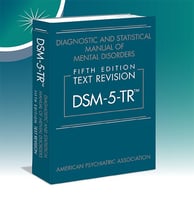APA Board of Trustees Approves DSM-5
 |
“The Board of Trustees approval of the criteria is a vote of confidence for DSM-5,”
said Dilip Jeste, MD, president of APA. “We developed DSM-5 by utilizing the best experts in the field and extensive reviews of the scientific literature and original research, and we have produced a manual that best represents the current science and will be useful to clinicians and the patients they serve.”
“We have sought to be very conservative in our approach to revising DSM-5. Our work has been aimed at more accurately defining mental disorders that have a real impact on people’s lives, not expanding the scope of psychiatry,” said David J. Kupfer, M.D., chair of the DSM-5 Task Force. “I’m thrilled to have the Board of Trustees’ support for the revisions and for us to move forward toward the publication."The manual will include approximately the same number of disorders as were included in DSM-IV. The manual is composed of three sections:
• Section 1 will give an introduction to DSM-5 with information on how to use the updated manual.
• Section 2 will outline the categorical diagnoses according to a revised chapter organization.
• Section 3 will include conditions that require further research before their consideration as formal disorders, as well as cultural concepts of distress, the names of individuals involved in DSM-5’s development, and other information.
Key decisions made by the Board of Trustees include the following:
• Overall Substantive Changes
o Chapter order
o Removal of multiaxial system
• Section 2 Disorders
o Autism spectrum disorder
o Binge eating disorder
o Disruptive mood dysregulation disorder
o Excoriation (skin-picking) disorder
o Hoarding disorder
o Pedophilic disorder
o Personality disorders
o Posttraumatic stress disorder
o Removal of bereavement exclusion
o Specific learning disorders
o Substance use disorder
• Section 3 Disorders
o Attenuated psychosis syndrome
o Internet use gaming disorder
o Nonsuicidal self-injury
o Suicidal behavioral disorder
• Disorders Not Accepted for Sections 2 or 3
o Anxious depression
o Hypersexual disorder
o Parental alienation syndrome
o Sensory processing disorder
Click here to read a message about DSM-5’s development by APA President Dilip Jeste, M.D. More information will be published in the December 21 issue of Psychiatric News.





